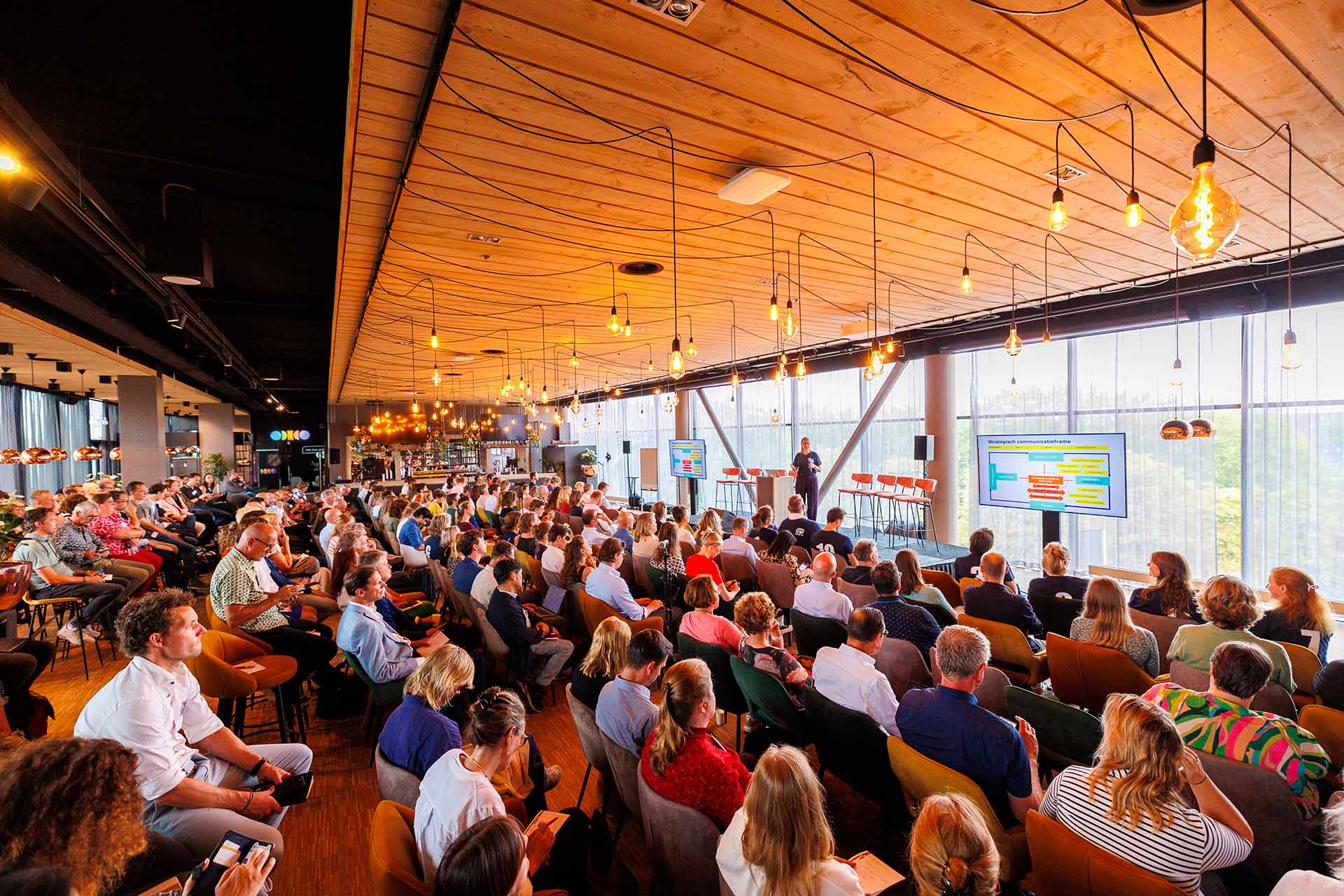Participate, participate, co-build. Under this motto, the Ministry of Health, Welfare and Sport kicked off the creation of a so-called Health Data Access Body (HDAB) on September 3.
This new body will have a pivotal role in ensuring safe and responsible data use for research, innovation and policy. If it is up to VWS, the technical facilities and working processes of the HDAB will be developed in co-creation with the entire field. Before that happens, many questions still need to be answered.
The choice of Stadion Galgenwaard as the setting for the HDAB kick-off meeting is apt for more than one reason. A kick-off and soccer belong together, of course. But the symbolism extends further. Under the eye of the visitors who have taken to the stands for lunch, a maintenance man patiently massages all the holes, bumps and creases out of the playing field.
Data quality
Something similar must soon be done by the HDAB in the area of secondary data use. As an enabling and managing body, the HDAB will, among other things, oversee access to electronic health data. The body will also review data requests, protect privacy, develop infrastructure solutions and a secure processing environment. In addition, the HDAB will offer training and support and there will be a work package on data quality
Concrete goal HDAB
With the introduction of the European Health Data Space (EHDS), all this is by no means a casual exercise. This draft law requires all EU member states to create a body over the next four years to promote and regulate the availability of data between data holders and data carriers. This sounds rather theoretical, but the goal is concrete. This is in line with the National Vision and Strategy drawn up by VWS together with the healthcare field.
"What matters is data availability," Jim Bloemberg explained in his presentation. "For primary use, everyone understands the importance, but why do researchers also need to access that data and then also Europe-wide? That sometimes evokes trepidation."
Rare diseases
Still, the benefits of broader data availability are obvious, according to Bloemberg. In this regard, he points to research into rare diseases. Without sufficient data, it is virtually impossible to find new treatments. Thus, there are numerous applications in the fields of research, innovation and policy where data can make a difference.
There is a crucial precondition for this, according to Bloemberg. " The use of secondary data stands or falls with trust. Trust in the data, but also trust in the fact that data is used responsibly and securely."
This is what the HDAB will soon have to oversee. Or as VWS puts it on its own site, "The HDAB also fulfills a supervisory role so that secondary use is always safe, responsible and within the framework of the law. An HDAB must monitor and intervene where the rules are not properly followed."
Administrative dual role
This administrative dual role raises questions. Is the HDAB conceived primarily as a facilitator and service provider or rather as an arbiter and regulator? If the latter is the case: can a HDAB supervise rules of play that it has helped to set up and services that it performs itself? The answer to this question is not made any easier when considering that the Netherlands has several bodies that can perform all or part of the work of an HDAB. In addition to HMOs such as the NZa, the Healthcare Institute, the IGJ and AP, Health-RI, the RIVM or CBS could possibly also play a role.
Unity of language
In addition to governance questions, there are technological challenges that affect the work of the HDAB. Think of poor interoperability and the search for unity of language. This sometimes still leads to mishaps, said physician Liesbeth Siderius, who acted as a representative of patients with rare diseases in Utrecht. "We even notice that patients still die unnecessarily because general practitioners and hospitals do not exchange information among themselves." And if exchange for primary use is already out of order -suggested Siderius- what can be expected from exchange for secondary use?
Time pressure
Suppliers, for the time being, seem particularly concerned about the time pressure under which the introduction of the EHDS and creation of the HDAB is happening. "We have a lot to go through," said a representative of EHR vendor ChipSoft. "We need at least a year and a half to develop a product, so it will be very tight." In the process, suppliers are "not involved enough," according to this spokesman.
To avoid reinventing the wheel, VWS wants to open the hatches to the outside world. Several countries are already working on an HDAB-like facility. One of the frontrunners is France, where a Health Data Hub was set up five years ago.
Useful tips
"That doesn't mean we have answers to all the questions," said Mario Jendrossek, director of European & International Affairs. Nevertheless, Jendrossek had actionable tips. "Start with concrete projects and especially engage data holders such as hospitals early. Especially data holders with a research background are often reluctant to share data." Such reserve, according to Jendrossek, is fueled in part by a lack of clarity about compensation for data reuse.
To get ahead of defensive behavior, VWS wants to involve as many stakeholders as possible in the development of the HDAB from the outset. Keywords in this process are co-creation, transparency, cooperation and trust. "We want to establish HDAB together with you," said Karin Oost, who, as senior communications advisor at VWS, is work package leader for communications in the HDAB project. "Instead of stakeholder management, we are aiming at stakeholder engagement. Now is the chance to turn criticism into something constructive."
Whether this approach bears fruit remains to be seen in the coming years. In any case, the large turnout at the kick-off of more than three hundred participants proves that there is great commitment in the healthcare field.













